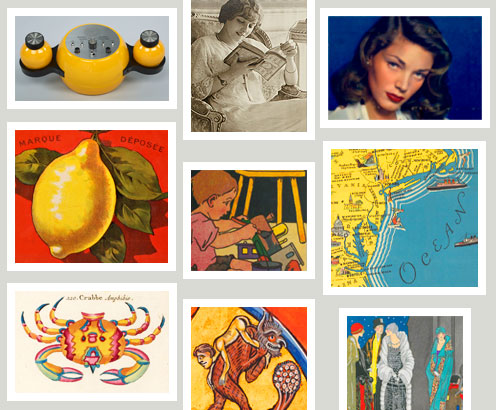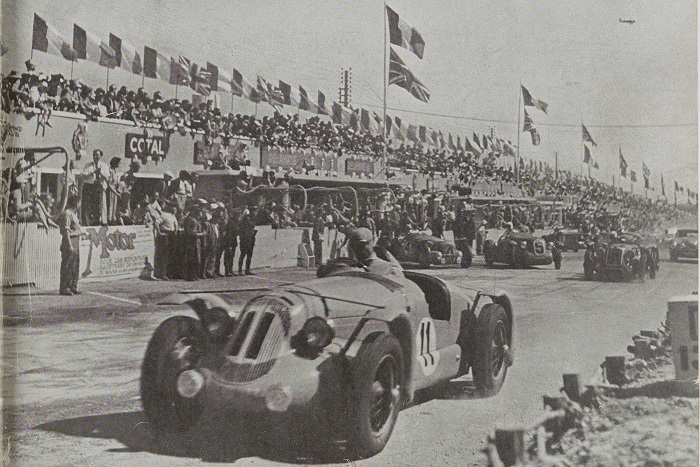The 24 Hours of Le Mans in the Press (6 / 6)
Since its very first edition, in 1923, the Le Mans 24 Hours race had received complete coverage in the written press of its time (daily newspapers, magazines) as this was the only way to spread out the news and racing facts at a national level in France. Nevertheless, a particular sports daily newspaper contributed to the race's creation.
L’Auto, Sports Daily Newspaper and Organiser of the Race
As we already discovered in a previous article, the idea of creating The 24 Hours of Le Mans appeared during a meeting in 1922 at the Paris Motorshow between Georges Durand (general secretary of Automobile Club de l’Ouest), Charles Faroux (engineer, driver, and journalist) and Emile Coquille (entrepreneur, owner of the wheels company Rudge Whitworth). There was another person present at this meeting: Georges Louis Lefevre (or Géo Lefevre), a journalist at l’Auto, the main sports daily newspaper in France at the beginning of the 20th century and ancestor of today’s l’Equipe.
Lefevre joined the redaction board of l’Auto in 1901, covering the cycling section. He had proposed at the end of 1902 to his boss Henri Desgrange the idea to organize a Tour de France cycling race. This idea became reality in 1903 when the first edition of the Tour de France has been organized and is still today one of the most famous sports events in the world. Geo Lefevre was at the same time journalist, race director, and manager of the event. Later on, his contribution to the creation of The Le Mans 24 Hours race is significant.
The Front Page of Auto, 28 may 1923
Amid the big number of features, articles, and interviews published in l’Auto, the race became national and international notoriety. The newspaper displays the race with front-page articles and photos but also creates free supplements and special editions. Therefore, the popularity of the race was increasing constantly from year to year.
Free Special Edition of Auto, 14-15 june 1924
After WWII, l’Auto is replaced by l’Equipe. Some of the journalists from l’Auto are still there with the new brand. The coverage of the 24 hours of Le Mans remains important as we can see in the multiple first page articles of those times.
The Front Page of Equipe, 25 june 1951
The Front Page of Equipe, 12 june 1952
L’Ouest-Éclair, the Main Regional Newspaper Covering the Race
Available in its integrality for a free lecture in Gallica, L’Ouest-Éclair has imposed itself as the main regional daily newspaper in France starting in 1899. Based in the western Region of Brittany (Bretagne), in Rennes, they used to promote and cover The 24 Hours of Le Mans since its beginning through a variety of features.
A Showcase for the Advertisers of the Automotive World
France-Illustration, Issue of 8 December 1951
Advertising Insert, France-Illustration, Issue of 7 October 1950
Advertising Insert, Excelsior, Issue of 19 June 1931
In Gallica, we can find many articles, reports, facts, and stories linked to The 24 hours of Le Mans. An example is the presentation of the “Le Mans type” start in Le Miroir des Sports: “In order to increase the difficulty, at the signal the drivers rush to their cars, which are stopped and engine off. This would allow some quick sprinters to nibble some precious seconds which would guarantee a good start and a good position during the first laps of the race”. The “Le Mans type” start was used from 1925 until 1970.
Le Miroir des Sports, 19 June 1928, Institut national du Sport, de l'Expertise et de la Performance
We also find a complete report in France-Illustration of the resounding victory of Louis Rosier in 1950 after having driven himself more than 23 hours in a row his Talbot-Lago. He only let his team-mate and son Jean-Louis drive the last two laps of the race.
Louis Rosier, winner of The 24 Hours of Le Mans in 1950, France-Illustration, 1 July 1950
There is also an interesting report on the “radio-men”, which animated the 1951 edition, a year that set “an unprecedented record in terms of spectators’ presence”.
The "Radio-men", France-Illustration, 21 Juin 1952
Thanks to the Gallica's newspapers and magazines, the history of The 24 Hours of le Mans Race can be followed in its detail, even hour by hour. We can find the complete standings and results, the rules' evolution, the cars' technical developments, and the drivers’ performances. The French sports heritage is therefore available to everyone.

Cultural Olympiad is a multidisciplinary artistic and cultural program which runs from the end of the previous Games to the end of the Paralympic Games.
The Gallica series « Centenary of The 24 Hours of Le Mans » is part of the official Paris 2024 programming.
















Ajouter un commentaire